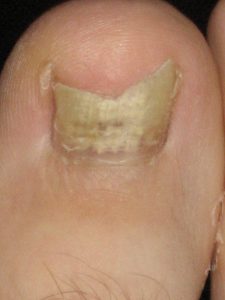A Case of Yeast Overgrowth Caused by Antibiotics
This case study is important, so make sure you read all the way to the end of this post. Yeast (fungi) overgrowth is one of the most common issues people face and the symptoms are often identical to that of gluten sensitivity.
I recently saw a patient who was suffering with chronic sinus infections, headaches, severe fatigue, and brain fog. She had been to several doctors and the standard course of treatment consisted of anti-inflammatory medications and antibiotics. She had actually been prescribed 5 courses of antibiotics over an 8 month period of time! The outcome? No improvements…she was actually getting worse.
Part of her problem was gluten sensitivity. You see, gluten was overwhelming her immune system, and over several years, weakened it to the point that she was no longer to protect herself. As a result she began developing sinus infections from yeast (fungal) overgrowth. Her general doctor’s solution was to assume that her sinus problems were coming from a bacterial infection instead of performing a culture to try to determine the actual cause.
By prescribing antibiotics, he actually made her yeast infection worse. Overuse of antibiotics destroy the healthy bacteria that serve as a natural regulator of yeast overgrowth. So in this case, the yeast infection was allowed to grow out of control, making her symptoms worse over time.
Here is what we did to help overcome yeast overgrowth
- Performed a yeast culture and sensitivity test (this helps to determine whether yeast is the culprit, and also what type of agent to use to help eliminate the overgrowth).
- Used a natural anti-fungal based on her test results.
- Used a very strong dose of probiotics for 1 month to help restore her healthy bacteria and prevent future yeast overgrowth.
- Used a strong dose of natural immune support containing natural antibodies.
- Because she tested positive for gluten sensitivity, I had her go gluten/grain free.
- Maintained a strict sugar free and alcohol free diet for 10 weeks (sugar and alcohol “feed” yeast and contribute to persistent overgrowth).
Remember, the symptoms of gluten sensitivity and yeast infections overlap greatly. Some of the most common similarities include muscle pain and inflammation, fatigue, and memory loss, skin rashes, headaches, and symptoms of IBS. Yeast can also contribute to a leaky gut. If you have gone gluten free and are still having persistent health issues, consider yeast overgrowth as a potential problem.
Yeast Overgrowth – What You Can Look For
- Check the nail beds in the fingers and toes. Yeast will discolor the nails white and yellow. They will also disrupt nail growth leading to horizontal ridging and pitting of the nails.
- Check the mouth. Yeast will present as a white film over the tongue and cheeks. This film can be scraped off by a tongue depressor.
- Vaginal yeast overgrowth can present as a white discharge. It can also cause pain and itching.
- Check your stools. Sometimes a yeast overgrowth presents as white flecks or specks in your bowel movements.
If you have recently been prescribed an antibiotic, it is a smart move to begin a 4-8 week course of probiotics. I recommend the following gluten free probiotic <<< Doing so will reduce your risk of developing a yeast overgrowth and all of the problems that come along with it.
Please share this with someone you love or care about. Together we can help more people find awesome health!
Always looking out for you,
Dr. Osborne
Dr. Osborne
Medical Resources on Yeast Overgrowth:
- Mycopathologia. 2014 Jun;177(5-6):223-40
- Mayo Clinic Proceedings. 2000 May; 75 (5): 540-541.
- Biomed Res Int. 2013;2013:204237


No comments:
Post a Comment